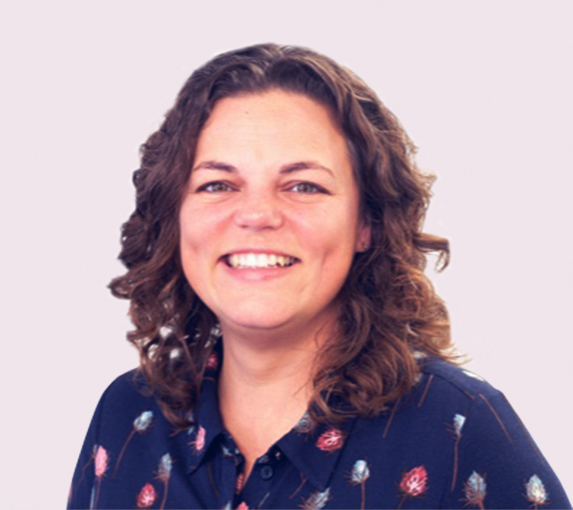
Episode 3: Maths in the Kitchen
Tight crumb, granny’s old pudding and more. In this episode Andy, Emily and Adam whip up some tasty opinions. Are bakers the greatest scientists of all time? What culinary skills could you develop in a few months? Plus, top tips to help children use their problem-solving skills in the kitchen.
More Podcasts on Education
Continue listening to our educational experts
Meet your instructors
The school of school podcast is presented by:

Andy Psarianos
@andy_psarianos

Emily Guille-Marrett
@EmilyEatsBooks

Adam Gifford
Never miss an episode
Subscribe to get the latest The School of School podcasts delivered to your inbox.
Podcast Transcription
Andy Psarianos
Hi, I'm Andy Psarianos.
Emily Guille-Marrett
Hello, I'm Emily Guille-Marrett.
Adam Gifford
Hi, I'm Adam Gifford.
Andy Psarianos
This is the School of School podcast.
Audio:
Welcome to the School of School podcast.
Adam Gifford
Welcome to the session. And I think what we need to talk about is maths in the kitchen, because I think that there's a fair amount that we can discuss, some obvious, perhaps some not so obvious. So, maths in the kitchen. Over to you two, when was the last time that you used maths in the kitchen?
Andy Psarianos
Well, I love cooking, I love baking. Now, I'm a bit... I'm a real hack. I very, very rarely measure anything when I cook, even thyme or whatever. I just make stuff, throw it in the oven, look at it, is it ready? Take it out, I'm that kind of cook. But there's one place where you just cannot get away with that, and that is baking bread. Baking bread has got to be the best science experiment anybody can do, right? It involves everything. Measurement, chemistry, physics, everything comes to play. You got to control temperature, you got to control ingredients. The type of flour you use has an impact, the amount of water, the temperature of water, everything comes to play. The type of salt that you use has an impact.
So baking bread is a great, great place, and I also think there's this really... there's so many fascinating things about baking bread, like reciprocity, as a concept. The idea that dumping a bucket of water on a fire is different than dumping a bucket of water on a fire one drop at a time, there's a complete different response. I think in science, they call that reciprocity, that comes to play with baking bread. So, what's really cool about baking bread is that it sort of plays against your intuition. If you say, 'Okay, I have a recipe for making one loaf, three cups of flour, one teaspoon of, or five milliliters of dry, powdered, instant yeast, 10 milliliters of salt, and whatever it is. Mix it all together and let it sit, you say, 'Okay, so that'll make me one loaf of bread. I want to make 10 loaves of bread.' So I'm going to take 10 times the ingredients, and put them all together, and mix it all up. And that's going to make 10 loaves. Yeah, it doesn't work.
So why does that not work? It kind of works, but you'll get a different result because the more you put, the rules start changing because of volume. So, what works in a small quantity doesn't necessarily work in a big quantity. So, if you're making massive amounts of bread, you've got to change the recipe to adapt, because of things like reciprocity. Because things like surface area and all kinds of... They all come into play. It's really a fascinating thing. So maths in the kitchen, you want opportunities for measuring, and making scientific experiments, and keeping journals, and qualifying your results, and quantifying your results? Bake some bread.
Emily Guille-Marrett
Whoa. I did not know that fact!
Adam Gifford
I second that.
Andy Psarianos
Yeah.
Emily Guille-Marrett
I've only ever done bread enough for one loaf, for one focaccia, so the idea that if I'd done it en masse, I could not have... I'd never thought about that before, that's crazy.
Andy Psarianos
Yeah. Yeah.
Adam Gifford
Let me give you one more number fact with bread. So, if I'm speaking to those people who are bread enthusiasts, you know how some bread's got quite a tight, it's called a tight crumb. So it's quite tightly, densely packed, and then you've got another where it's quite loose. The key number you're looking for is the number of grams of protein, or the percent of protein in the flour. So there you go, there's a little experiment that you can do with your kids, or you can do it yourself. The less protein, the more it can spread out. It's not as tough, so you get more air bubbles. The higher the amount of protein in the flour, the tighter it is, because it's harder to stretch. So there you go, there's a little experiment that you can do, proportion of protein in flour. Top tip for today.
Andy Psarianos
Okay. So when you buy flour, does it say how much protein is in the flour?
Adam Gifford
It certainly does, yes.
Andy Psarianos
So if you want a looser crumb, more air bubbles, do you-
Adam Gifford
Low protein.
Andy Psarianos
Low protein, wow. Okay. Because there are other factors too, right? So the ratio of moisture to flour, so the wetter your dough. So often when we do recipes, we do them like, 'Okay, three cups of this.' But then you'll have a different measure for something else. It'll be like one teaspoon of the whatever, maybe you'll weigh your flour, you'll say like, '500 grams of flour.' and I don't know, let's say, 250 milliliters of water or something. That's probably not right, but let's just say that that could be it. But there's another way, like when you look at professional bakers, they always talk about ratios. So everything's in ratios, and it's always based on weight. So, it's like your ratio of water to flour, right? If you increase the water, you will get a looser crumb.
So if you look at some of the recipes for making stuff like ciabatta and breads like that, the ratio is so wet that the dough is unmanageable. It's like a soupy, messy, almost really sloppy porridge consistency. For some breads, this is totally unmanageable, but it'll give you a specific type of bread, so that's an interesting thing. The other thing too, that comes to play in it, is how often you stretch it. So when you're letting it rise, how often you stretch it and fold it over itself. So all these things have factors, bakers are like the greatest scientists in the world, really, right? So you see for all those parents on lockdown, it's inexpensive, what do you need? Flour, yeast, salt, water, and an oven. That's your starting point.
Emily Guille-Marrett
And we've all got plenty of time. So if you're proving it as well.
Andy Psarianos
Yeah. That's the other thing that you need a lot of when you're making bread actually, is time.
Emily Guille-Marrett
Well, I kind of feel like I'm letting my kids down now. I was going for getting the recipe book out, and doing maths, but that sounds like there's some great stuff going on there, in terms of temperature, and ratio, and time. And yeah, bread is complex, it's just a great time to do maths without them even realizing they're doing it, isn't it? I just love that. I smile as I'm actually watching my... if I tried to get my kids to sit and do a worksheet on scales, it wouldn't be so easy. But if I suddenly do some cooking, I'm checking out that they understand what 500 grams is and what it's equivalent to, because it's on the scales.
Andy Psarianos
So kids nowadays pretty much learn everything in kilograms and grams, and they don't do that much in pounds, and pints, and ounces, and all those things are foreign measurements to them now. So you find some old recipes from Granny which are all... and then you get them to convert everything. Because you only have now a metric scale, so that's a fun project. So you've got this recipe, how to make the Christmas pudding or whatever from Granny, from three generations back or whatever it is. And it's all in Imperial measurements. And now you've got to convert everything to metric.
Adam Gifford
I think the other winner, and it comes back to that appeal of books like George's Marvelous Medicine, where you just make and create. So I'm thinking of things like if you just say to the children, 'Right, here's the deal, we're going to make granola, we're going to make cookies. And we've got so much time, we've got months. We got months ahead of us in making it, so we need to come up a perfect recipe. So you just jot down what it is.' And I think that whole idea about that ownership, and then saying, 'Well, it worked really well when we put a cup of chocolate chips in here, it didn't work so well when we added this and that.' And I think that idea, that's kind of getting things in like proportionality by stealth, but also that decision making process of, 'Oh, what happens here? So there'll be a bit of chemistry there, because if I put too much of this and it's all going to go horribly wrong, or it may or may not go well.'
But it requires them to think about the relationship between the quantities that they're putting in. And I think the children can order and make their own recipe, so Andy has his own granola recipe, and Emily has her own granola recipe. And the difference between the two is those sorts of things can happen all the time, and it's really personalized. And as I said, all I was saying, if you've got the time to do it and work on it, and to go back and evaluate. And this is all problem-solving skills, these are the skills that, especially that evaluation part, sometimes gets left out. We just complete something, and that's it. But actually if they know, 'No, we're going to make this better and better, the aim is to make the single best chocolate chip cookie in the world.
Andy Psarianos
Oh yeah.
Emily Guille-Marrett
I'm guarantee that my youngest son, I'm loving this idea. My youngest son will learn very quickly that if he pours the whole bag of chocolate chips into the consistency, as exciting as that might look, it's not going to work, but I'll let him do...
Andy Psarianos
Yeah, yeah, no, but those are great learning experiences. And there's so many opportunities in the kitchen, so it's like, 'Oh, well, we've made this recipe for, I don't know, a dozen fairy cakes. And we have our pen, and it has a dozen. How much do we put in each section?' So you've now got to estimate this quantity of stuff divided by 12 in your mind, so that when you put the first one down, you get about the right amount. So you don't end up with one fairy cake that's this big, and another one, that's this big. Because you've had to estimate how much you need to put in each little container in your tray, in your baking tray. And they're all mathematical skills.
Emily Guille-Marrett
Something that's really lovely with that, Andy, is my children have not really known my mother as a maths teacher, but that's what she was, a primary school maths teacher. She was head of maths, and she absolutely has been brilliant in lockdown with my youngest, because he's definitely a learner who he sometimes just gets really frustrated with the static sitting down at it. Well, who doesn't like doing. And one of the things I realized is how much he's enjoyed cooking, and is becoming a thing he loves, to cook. And not just baking cakes, which I think is interesting, he genuinely loves them. Even if it's a roast chicken, he's like, 'I'm up for this.' But he's been FaceTiming his granny, and she said like, 'Okay, let's do a cookery show. You're going to actually... you're going to come, and you're going to teach me how to make Alby's chocolate brownies. So, you're going to have to send me the recipe.' Which is meant that he's got to write it all down. And then she's great, because she does the whole, 'Well, I didn't get... so how much is that, you're going to have to show me, because I can't do it.' Which is obviously a great thing.
... But it becomes exciting. He's got his little chef's hat on, and it's FaceTiming. And of course, when you're living apart and you're not seeing people, it's really nice, and she can connect with him. And then at the end of his half hour of cooking, he's like, 'And then we put it in the oven!' sort of thing, and it's great. Doing the time, and allowing them to articulate it in terms of vocabulary and writing, and it's a whole host of things as well as the maths. It's great.
Andy Psarianos
Absolutely, and there's so many opportunities. I remember having this discussion, I'm trying to remember who was... with my youngest daughter and one of her friends, I think. And the discussion was, 'Okay, so we've got this rest...' it was Christmas, and we're roasting a turkey, but we had, this is not this last Christmas, because obviously we didn't have anybody over. But the previous Christmas, we were going to feed, I don't know, 20-some odd people. That's a lot of turkey. So the question was, we had this recipe for roasting a turkey, and we decided that we needed double the amount.
So, the discussion was, 'Do we do two turkeys?' And luckily we have an oven large enough where we can do two turkeys, 'Or do we do one massive turkey?' and what's the different approach for baking? When you're baking two turkeys in the oven, is that the same as baking one large turkey, or is it just the same as baking one turkey? And none of us really could categorically give 100% for sure answer, about what the right approach was. And I won't even tell you what the answer is, go and try it, see what happens.
Adam Gifford
I've got a call, I reckon I've got a guess, but I'm going to leave it. I'll let people try it. I'm intrigued now, I'd give it a go.
Andy Psarianos
So what's the factor, what is the thing? Is it the amount, or is it the distribution of surface area? There's so many things to discuss, so there you go. Maths in the kitchen, have fun.
Audio:
Thank you for joining us on the School of School podcast.
More Podcasts on Education
Continue listening to our educational experts
